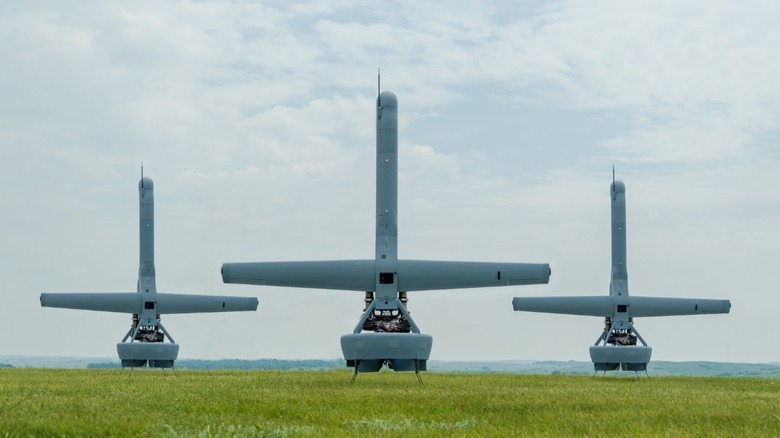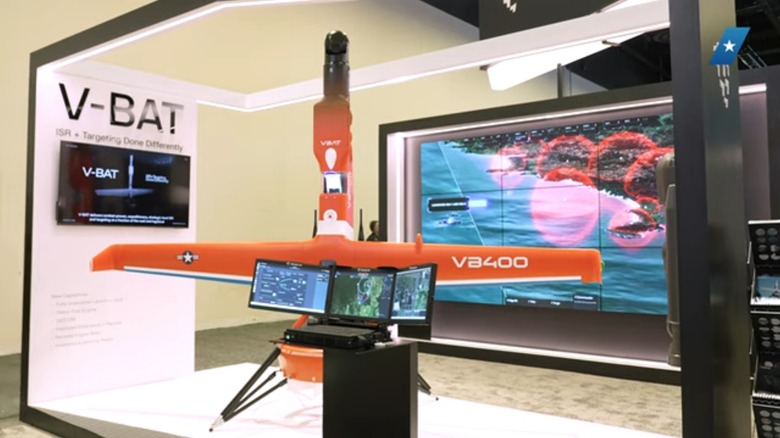AI Is Enhancing The Capabilities Of Battle-Tested US Military Drones - Here's How
If military conflicts of the 21st century have demonstrated anything, it's that drones like the MQ-9 Reaper and other semi-autonomous systems are the way of the future. The U.S. military operates several groups of drones, including those that fly, drive, and swim, with one that's undergoing significant development being Shield AI's MQ-35 V-BAT. The unusual-looking drone is capable of vertical takeoff and landing (VTOL), which it does from a vertical position, though flight is accomplished in a more traditional horizontal configuration.
The U.S. Navy selected the V-BAT in 2021 for further development and testing. By 2022, they were already used for moving cargo, security, and monitoring operations. Martin UAV initially developed the uncrewed aerial vehicle (UAV) before Shield AI later acquired it. The company has been hard at work developing new block upgrades to the V-BAT, and the company's co-founder, Brandon Tseng, unveiled new capabilities at Sea Air Space 2025, held April 6 to 9 in National Harbor, Maryland.
In his detailed explanation of his company's latest and greatest advancements, Tseng touted the increased endurance, the added payload capacity, and, most importantly, the automated and artificial intelligence features capable of operating the V-BAT in various scenarios. The proprietary Hivemind Pilot technology works in conjunction with EdgeOS to significantly improve the unmanned aircraft system (UAS) for future combat operations anywhere within its extensive range.
The Shield AI MQ-35 V-BAT
The MQ-35 V-BAT is a VTOL system capable of flying continuously for over 13 hours with its electro-optical and infrared systems onboard. It has a maximum payload capacity of 40 pounds, which is upgraded from its previous capacity, and a max range of 112 miles. It only requires a 15-by-15-foot area to land and take off from, so it has an incredibly small footprint. The aircraft itself is 9 feet, 6 inches tall and has a 12-foot, 6-inch wingspan. The new units feature a SATCOM, so they can communicate from anywhere in the world.
The system's optional payloads include the Hivemind Pilot, which includes features like a synthetic aperture radar (SAR) and a SATCOM transponder. Most notable is the inclusion of a GPS and standard communications jammer, which the V-BAT uses to mask its approach when targeting an enemy. This was successfully done in Ukraine by jamming the target so that it was entirely vulnerable to attack.
Furthermore, the V-BAT can operate without GPS in a jammed environment to help guide munitions like the HiMARS rocket system to a target, maximizing its capabilities and broadening them to roles traditionally performed by fighters. Another added benefit to the V-BAT is drone swarming, which was successfully achieved in late 2023. This feature allows the V-BAT's Hivemind to handle multiple aircraft at once, coordinating them while performing distributed, autonomous operations against enemy locations. This alone makes the V-BAT and its associated technology a UAS to watch in the future.

